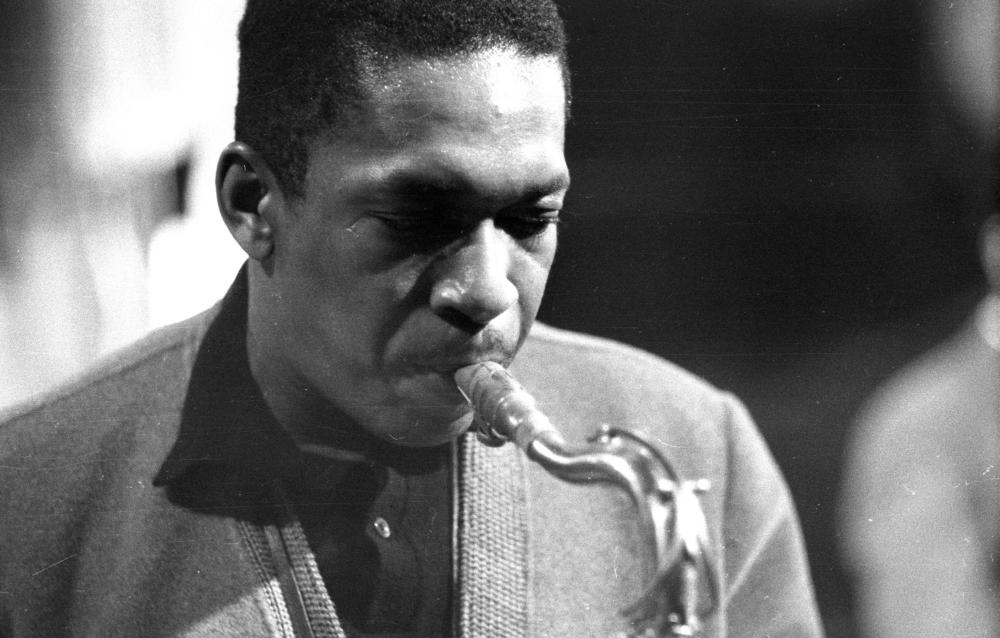
One of the first things I did when I began using I-Tunes in 2002 was create a playlist of John Coltrane playing ballads. Coltrane’s music offers one of the most complete realizations of an artist striving to find balance between restlessness and serenity, and his ballads tend to reflect this universal search.
“Soultrane” was an early landmark in Coltrane’s development. Tadd Dameron composed the ballad for Mating Call, the 1956 album that he and Coltrane co-led for Prestige. Trane’s beautiful upper register playing on “Soultrane” displayed a distinctive tonal aspect of its eponymous subject.
Coltrane’s ballad style became more noteworthy in 1957 on his recordings of “Ruby, My Dear” with Thelonious Monk; “I’m Old Fashioned,” the only non-original that he played on Blue Train, the Blue Note album that Coltrane named as his favorite in a 1960 interview; and “Lush Life,” the first of two recordings of the Billy Strayhorn classic that Coltrane firmly established as a jazz standard. On his 1958 album Soultrane, John introduced “Theme for Ernie,” Fred Lacey’s haunting elegy for saxophonist Ernie Henry, and “I Want to Talk About You,” Billy Eckstine’s mid-forties ballad that remained a concert staple of Coltrane’s through the mid-sixties. In 1959, Trane recorded two great jazz originals, “Naima,” on Giant Steps, and “Blue in Green” on Miles Davis’s Kind of Blue. Ben Ratliff writes that Kind of Blue “collects [Coltrane’s] energies into narrative instead of spraying speed and technique and influences,” a quality that his ballad playing had fostered and reflected in the preceding three years.
“Naima” was named for John’s first wife, Juanita Grubbs, who adopted the name Naima when she converted to Islam around 1954. (Coltrane also composed “Nita” for her and premiered it on the Paul Chambers album, Whims of Chambers.) Trane called “Naima” his favorite composition in various interviews, and when he visited the home of the Norwegian pianist Randi Hulton in 1963, she asked him to sign her guestbook by writing “a few bars of your favorite composition.” He obliged with “Naima.” Coltrane described the tune to Nat Hentoff as one “built on suspended chords over an E-flat pedal tone on the outside. On the inside, the channel, the chords are suspended over a B-flat pedal tone.” Remarking on the song’s powerful emotional impact, Hentoff says, “It represents a man’s being in thorough contact with his feelings, and being able to let them out.”
“Naima” was recorded by Coltrane with Wynton Kelly, Paul Chambers, and Jimmy Cobb in 1959. An earlier take featured pianist Cedar Walton, who later recorded his own medium tempo arrangement of the song with George Coleman on their celebrated 1975 album, Eastern Rebellion. Walton’s arrangement was later played by the cooperative group One For All on their 2003 Criss Cross Jazz album, Blueslike.
Here’s the John Coltrane Quartet playing “Naima” on August 1, 1965, in Comblain-la-tour, Belgium. The clip’s a little grainy, but it’s complete and offers extraordinary close-ups of the iconic quartet featuring McCoy Tyner, Jimmy Garrison, and Elvin Jones. The performance is a vivid illustration of Coltrane’s tendency to pivot between calm and disquietude, and a good example of the parallels between his style and the dynamics of sermonizing in the African American church, from a calm and welcome opening to vehement and thunderous homiletics on the wages of sin. As Coltrane made clear in works like “Dear Lord,” “A Love Supreme,” and “The Father, the Son, and the Holy Ghost,” the spiritual quest was a powerful motif in his work and it remains one of the most influential characteristics of his uniqueness as an artist.